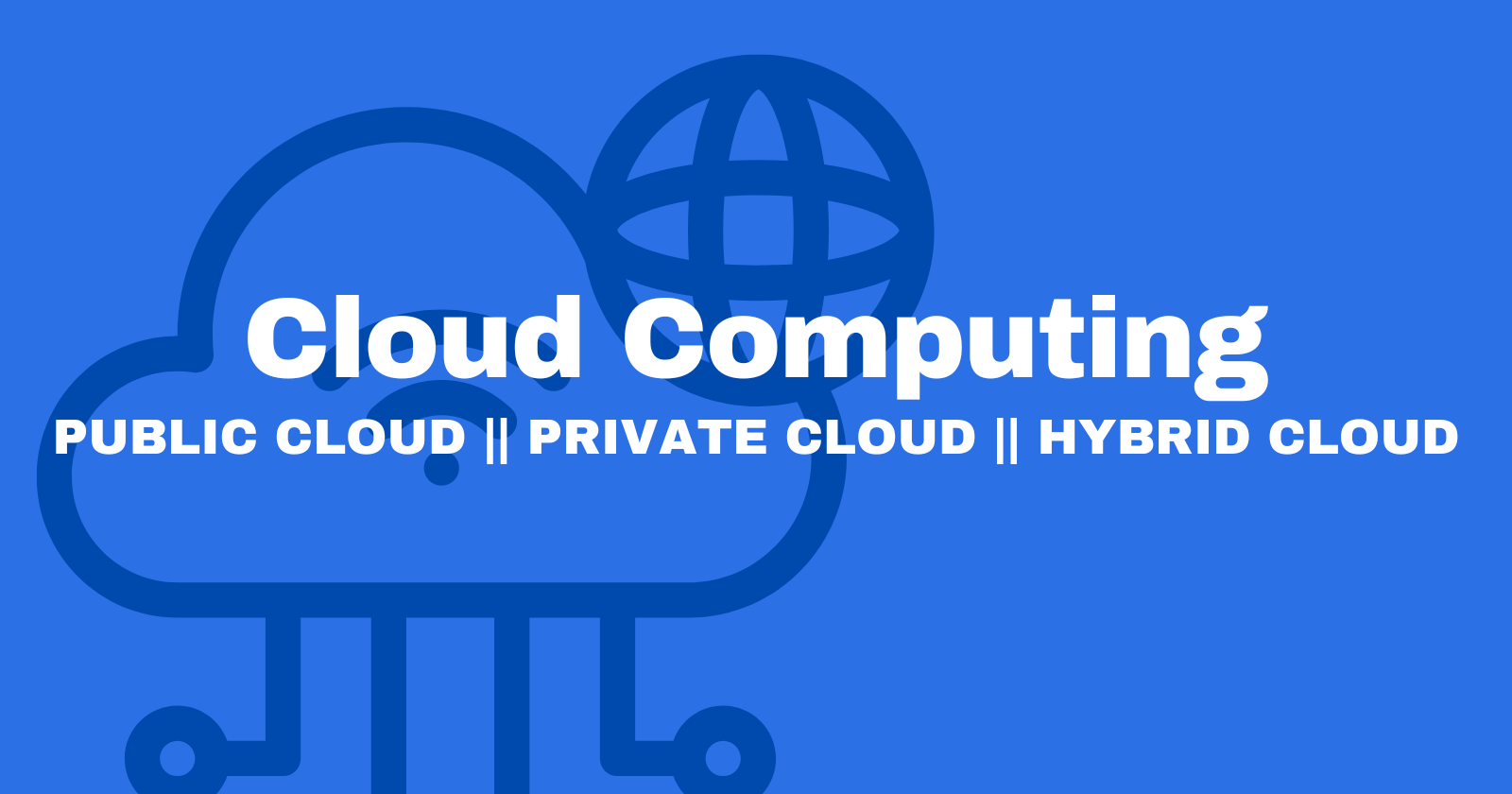Cloud Deployment Models: Public vs. Private vs. Hybrid
 Jaykumar Mandaviya
Jaykumar Mandaviya
In the world of cloud computing, there are three main cloud deployment models: public cloud, private cloud, and hybrid cloud. Let's explore the concepts of Public Cloud, Private Cloud, and Hybrid Cloud.
Public Cloud
The public cloud is a cloud computing model where services are delivered via the Internet and shared across multiple organizations.
Characteristics:
Accessibility: Open to anyone subscribing to the services.
Shared Infrastructure: Resources pooled and shared among various users.
Examples: Think Microsoft Azure, Amazon Web Services (AWS), and Google Cloud Platform (GCP).
Advantages
Scalability: Easily scale resources based on demand.
Cost-Efficiency: Pay only for what you use.
Global Reach: Accessible from anywhere with an internet connection.
Use Cases
Ideal for applications with variable workloads, web hosting, and collaboration tools.
Private Cloud
The private cloud is your exclusive space, dedicated solely to a single organization within its own data center.
Characteristics
Isolation: Resources exclusively for your organization.
Control: Full control over security, compliance, and infrastructure.
Examples: Crafted using technologies like VMware, OpenStack, or Microsoft Hyper-V.
Advantages
Security: Sensitive data remains within the organization's boundaries.
Customization: Tailor-made to meet specific business needs.
Predictable Performance: Consistent performance with dedicated resources.
Use Cases
Ideal for industries with strict compliance requirements, such as healthcare and finance.
Hybrid Cloud
A hybrid cloud blends the benefits of public and private clouds, allowing data and applications to flow freely between the two.
Characteristics
Flexibility: Leverage benefits from public and private clouds.
Data Mobility: Move workloads as per requirements.
Examples: Organizations often dance with hybrid clouds to balance cost, performance, and security.
Advantages
Data Sovereignty: Keep sensitive data on-premises while tapping into public cloud resources.
Edge Computing: Extend cloud capabilities to IoT devices closer to data sources.
Cost Optimization: Scale to the public cloud when needed, avoiding unnecessary capital expenditures.
Use Cases
A strategic choice for scenarios demanding regulatory compliance, low latency, and flexible workload management.
The best cloud model for you depends on your business. Consider factors like security needs, regulations, workload type, and budget. Weigh the pros and cons of each option to pick the cloud that fuels your success.
Subscribe to my newsletter
Read articles from Jaykumar Mandaviya directly inside your inbox. Subscribe to the newsletter, and don't miss out.
Written by
